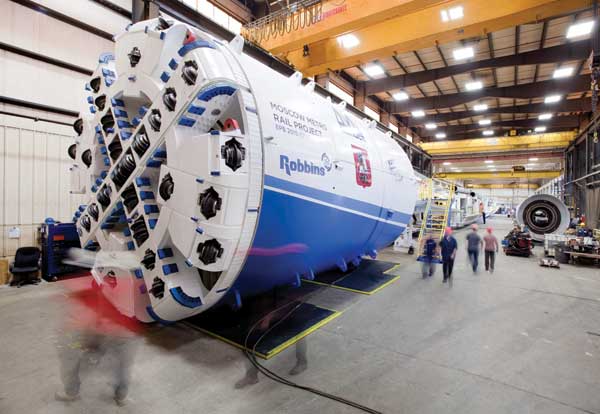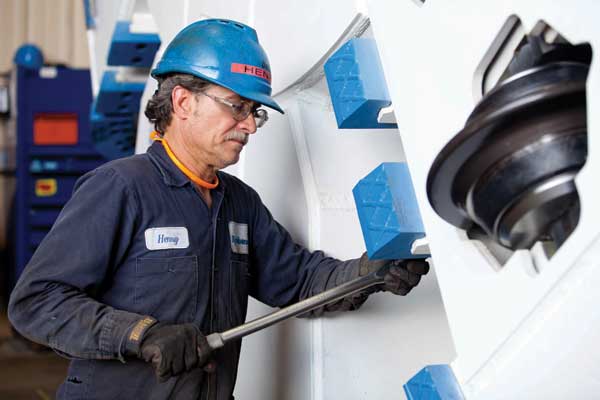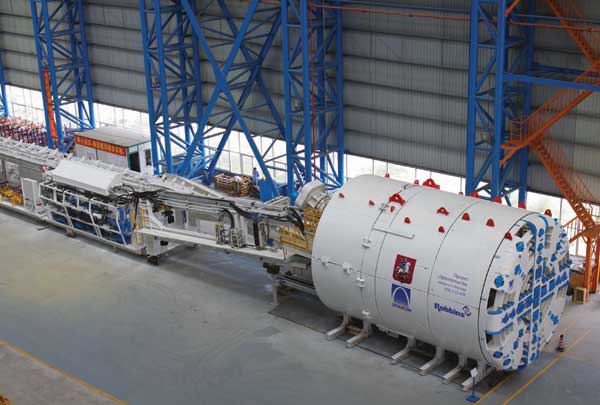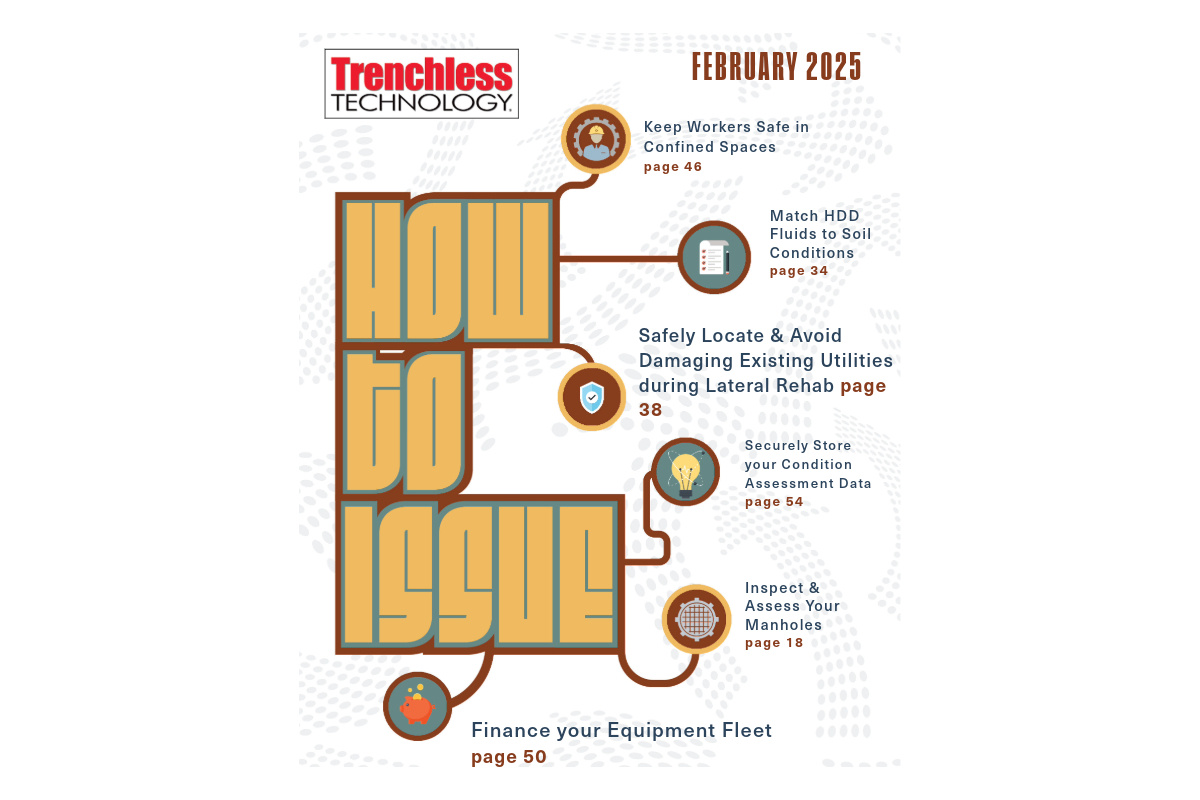Robbins EPBs Gear up for Massive Metro Project in Moscow
November 29, 2012
 Mixed ground, freezing temperatures, and compact urban jobsites are just a few of the challenges for Moscow’s epic metro development scheme. The program calls for 150 km (93.2 miles) of new metro lines within the next eight years — a rate of construction second only to China. Three High Performance Robbins EPBs and one refurbished machine are up to the challenge, excavating at multiple jobsites around the city.
Mixed ground, freezing temperatures, and compact urban jobsites are just a few of the challenges for Moscow’s epic metro development scheme. The program calls for 150 km (93.2 miles) of new metro lines within the next eight years — a rate of construction second only to China. Three High Performance Robbins EPBs and one refurbished machine are up to the challenge, excavating at multiple jobsites around the city.Contractor Engeocom purchased two 6.6-m (21.6 ft) Robbins EPBs to excavate two 1.8-km (1.1-mile) long tunnels. In addition, the contractor refurbished their pre-owned Lovat machine with a Robbins cutterhead and spare parts for a 2-km (1.2-mi) interstation tunnel. The refurbished machine launched in August 2012 and had progressed more than 265 m (869.4 ft) by November 2012. A fourth 6.2 m (20.3 ft) Robbins EPB was purchased by contractor USK MOST for a 1.9 km (1.2 mi) section.
Due to the urban constraints of Russia’s bustling capitol, jobsite modifications were required. The Robbins EPBs will be launched from small shafts of 30 m (98.5 ft) deep and 15 m (49.2 ft) deep, respectively. The USK MOST EPB will also require a shortened launch setup from its shaft, with back-up gantries at the surface. Vadim Bocharov, managing director of USK MOST, said of the machine: “Robbins has very nice people helping us with this, and good field service. The Robbins machine also has a very nice design; it is a world-class EPB machine. We think this machine has a better steel construction, and is more durable and powerful than we have seen in other TBM brands.”
 Moscow’s geology is characterized by fine sand, gravel, loam, stiff clays and boulders, and all four EPBs are well-prepared to handle the complex geology that lies ahead. Each is outfitted with a mixed ground cutterhead reinforced with abrasion-resistant wear plates, giving the option to interchange carbide knife-edge bits with 17-inch disc cutters when needed.
Moscow’s geology is characterized by fine sand, gravel, loam, stiff clays and boulders, and all four EPBs are well-prepared to handle the complex geology that lies ahead. Each is outfitted with a mixed ground cutterhead reinforced with abrasion-resistant wear plates, giving the option to interchange carbide knife-edge bits with 17-inch disc cutters when needed. The four EPBs are the first in the entire city equipped with electric variable frequency drives (VFDs), for faster excavation, minimized disturbance, and limited settlement. For maximum speed and efficiency, Robbins continuous conveyors are carrying muck behind each of the machines.
Challenges include those associated with the fast-approaching Moscow winter, when temperatures average -17 C (0 F). USK MOST will be doing extensive monitoring to keep fluids from freezing, but sees a positive side in the low temperatures: “The colder temperatures may help in minimizing soil settlement through the winter,” said Bocharov. Extensive soil conditioning is also part of the settlement minimization plan.
 Once under way, the machines will join dozens of other EPBs in the largest simultaneous construction by TBMs that has ever taken place in Moscow. Upon completion, the extended metro system is intended to alleviate traffic congestion and lower the average two-hour travel times that currently affect 12 million commuters.
Once under way, the machines will join dozens of other EPBs in the largest simultaneous construction by TBMs that has ever taken place in Moscow. Upon completion, the extended metro system is intended to alleviate traffic congestion and lower the average two-hour travel times that currently affect 12 million commuters.


